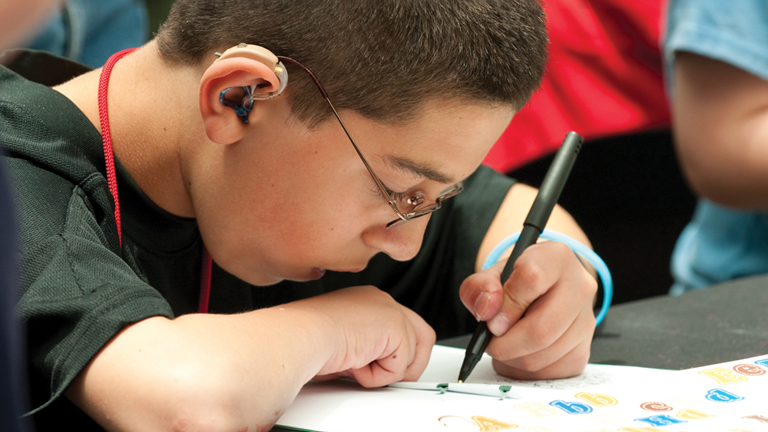Media Know Before You Go: Ballet Rehearsals
This resource offers a quick guide to what you may experience at a ballet rehearsal.
Genre
Performances for Young Audiences

Image caption: American Ballet Theatre’s Devon Teuscher and James Whiteside. Photo by Patrick Fraser.
Enjoy an insider’s look at our visiting companies as they prepare onstage for performance.
Written in 1866 by Fyodor Dostoyevsky, Crime and Punishment is a devastatingly modern psychological thriller that provided choreographer Helen Pickett and director James Bonas with a startling source for a ballet. The protagonist Raskolnikov is a brilliant student forced to stop his studies due to brutal poverty, a person capable of great warmth and generosity, a loyal family member and friend…and an appalling murderer. These contradictions are so real and so vivid that this young man’s journey towards redemption has captured readers for over 150 years. The powerful physicality of Raskolnikov’s life, the web of relationships and drama that surround him, and the profound humanity that Dostoyevsky discovers all speak to today’s world and beg to be explored in dance. Pickett brings Raskolnikov’s story to life in this striking new ballet, featuring music by Isobel Waller-Bridge, sets and costumes by Soutra Gilmour, lighting design by Jennifer Tipton, and video design by Tal Yarden.
February 12, 2025
Opera House, recommended for grades 6-12
Estimated duration is approximately two hours with an intermission.
Image caption: American Ballet Theatre’s Devon Teuscher and James Whiteside. Photo by Patrick Fraser.
We’re thrilled that you’ve joined us for a performance this season! We would like to hear from your students and you about the experience. After the performance, follow these steps to share feedback:
Each survey will take approximately five minutes to complete. The results will be used to inform future Kennedy Center Education program planning.‚ÄØThank you in advance for sharing your valuable perspective!
This resource offers a quick guide to what you may experience at a ballet rehearsal.
Learn the basics of Ballet, a type of performance dance that originated during the Italian Renaissance in the fifteenth century, developed into a concert dance form in France and Russia, and has since become a widespread and highly technical form of dance with its own vocabulary.
With their flat, stiff fronts and special construction, pointe shoes give ballerinas the footwear that helps them stay on their toes and wow audiences
In ballet, a pas de deux is a dance duet in which two dancers perform ballet steps together. But the pas de deux is not just a dance of love.
In this 6-8 lesson, students will be introduced to basic ballet terms, positions, and movements. They will discover the history of ballet, the meaning of keywords, and practice French pronunciation. Students will demonstrate basic ballet positions and movements through planned choreography.
American Ballet Theatre (ABT) Studio Company and choreographer John Selya explore the history of classical dance, demonstrating how it has changed over 300 years.
Want to understand how dance works? Learn the five elements that make up the foundation of this art form: body, action, time, space, and energy.
What does ballet have to do with the Russian Revolution? What's a plié or a jete or cinquième? How do ballerinas condition their bodies to perform like athletes? Delve into an art form with a language all its own and a rich history interwoven with cultural revolution, political rebellion, and artistic innovation.
Professional development for educators. Summer intensives for young artists. Teaching artist guided activities. Performances for young audiences. Classroom lesson plans. Arts-focused digital media.
Kennedy Center Education offers a wide array of resources and experiences that inspire, excite, and empower students and young artists, plus the tools and connections to help educators incorporate the arts into classrooms of all types.
Our current teaching and learning priorities include:
A robust collection of articles, videos, and podcasts that allow students of all ages to explore and learn about the arts online.

In-person and virtual performances, along with supporting educational content to help guide learning.

Current approaches to arts integration in the classroom, inclusion, rigor, and adopting an arts integration approach at the school and district level.

An asynchronous online course that invites educators and administrators to think about our students’ disabilities as social and cultural identities that enrich our classrooms and communities.

The Vice President of Education is generously endowed by the
Generous support for educational programs at the Kennedy Center is provided by the U.S. Department of Education.
Gifts and grants to educational programs at the Kennedy Center are provided by The Paul M. Angell Family Foundation; Bank of America; Capital One; The Morris and Gwendolyn Cafritz Foundation; Carnegie Corporation of New York; The Ednah Root Foundation; Harman Family Foundation; William R. Kenan, Jr. Charitable Trust; the Kimsey Endowment; The Kiplinger Foundation; Laird Norton Family Foundation; Lois and Richard England Family Foundation; Dr. Gary Mather and Ms. Christina Co Mather; The Markow Totevy Foundation; Dr. Gerald and Paula McNichols Foundation; The Morningstar Foundation; Myra and Leura Younker Endowment Fund; The Irene Pollin Audience Development and Community Engagement Initiatives;
Prince Charitable Trusts; Dr. Deborah Rose and Dr. Jan A. J. Stolwijk; Rosemary Kennedy Education Fund; The Embassy of the United Arab Emirates; The Victory Foundation; The Volgenau Foundation; Volkswagen Group of America; Jackie Washington; GRoW @ Annenberg and Gregory Annenberg Weingarten and Family; Wells Fargo; and generous contributors to the Abe Fortas Memorial Fund and by a major gift to the fund from the late Carolyn E. Agger, widow of Abe Fortas. Additional support is provided by the National Committee for the Performing Arts..
The content of these programs may have been developed under a grant from the U.S. Department of Education but does not necessarily represent the policy of the U.S. Department of Education. You should not assume endorsement by the federal government.